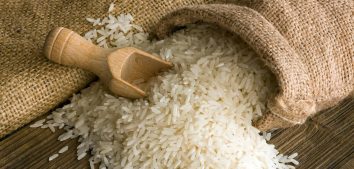
Thyroid Problems? Check These Useful Tips!
Most of us know at least one person struggling with thyroid disease. Both hypothyroidism and hyperthyroidism affect 1 to 6% of the population, and women are 4-5 times more likely to suffer from the disease. The concept of thyroid disease includes many types of disorders related to this organ which have different etiology, require different treatment methods and vary in terms of extreme symptoms.
Let’s take a closer look at hypothyroidism. Patients who suffer from it most often ask a dietitian or trainer for help. Why? Hypothyroidism manifests itself through concentration problems fatigue, drowsiness, dry skin, low blood pressure, weight gain, water retention in the body, and feeling cold (check how to deal with these problems HERE), and sometimes depression and menstrual disorders.
Dietary and physical activity recommendations are not much different when we consider the cause of the disease. Although autoimmune factors such as Hashimoto’s disease dominate here and patients suffer from inflammations of various origins, nodules, iodine deficiency or excess, damage and injuries (both to the thyroid gland and the nervous system that governs it), genetic factors can also play a part.
In the media, on the Internet and on book shelves, you can find a huge amount of information about diet, supplementation and exercise. But are they helpful? Unfortunately, we find many myths and data with no scientific background. Today I will give you some of the most important facts!
Energy demand and weight gain in thyroid diseases
The fact is that in hypothyroidism, basal metabolic rate (BMR) goes down. This is why, if you don’t change your diet, you start to accumulate body fat. Remember that when hypothyroidism is treated, you achieve normal hormone levels and BMR values return to normal!
How to deal with it?
Step I the basis here is treatment properly selected by an endocrinologist. If you have or think you may have thyroid disease, see a specialist.
Step II increasing your energy needs by adding physical activity, introducing regular meals and adequate hydration.
Step III reducing the caloric value of your diet, but be careful! Too high dietary restrictions of 40% and more lead to lower levels of thyroid hormones, further drops in BMR values, and the yo-yo effect. The recommended deficit is about 10-20% of the caloric value of the diet in relation to your needs. You can find out how to calculate it HERE.
Protein in hypothyroidism
During the disease, the process of protein synthesis is difficult. You can notice more frequent infections, brittle nails, poorer skin condition, hair loss or poorer results in training.
It’s not the end of the world!
Step I make sure your diet is rich in wholesome protein sources, such as good-quality fish, meat, eggs, nuts and properly composed legumes
Step II try to provide protein in at least 2-3 meals a day to cover the increased demand and enable the body to use it more effectively as a building component.
Step III choose natural products! Avoid highly processed meats or ready-made products.
Be careful with carbohydrates
Here, the key to success is the Glycemic Index (GI). Carbohydrate metabolism disorders, including insulin resistance, are common in hypothyroidism (read more about it HERE). In studies conducted between 2001 and 2010, over 27% of people with Hashimoto’s disease had diabetes mellitus, and 16.6% were diagnosed with impaired fasting glucose or impaired glucose tolerance. The conclusions from the data suggest the need to extend the diagnosis towards diabetes and to introduce the diet used in the prevention and treatment of diabetes in patients with diagnosed Hashimoto’s disease. In the course of Hashimoto’s, the risk of developing diabetes is greater than in the general population and is associated with symptoms such as increased thirst, fatigue, dry skin, difficulty in wound healing, and pollakiuria.
What products are recommended?
Step I cut out white sugar, glucose, fructose or corn syrups from your diet.
Step II introduce groats and whole grain products, such as quinoa, millet, brown rice, buckwheat or amaranth.
Step III make sure you have lots of vegetables and fruit. They will provide fiber, vitamins and minerals.

Fats in your diet
Thyroid diseases are characterized by an increased demand for antioxidants and anti-inflammatory ingredients. A low-fat diet can be low in vitamins such as A and E and omega-3 fatty acids. However, saturated fats found in animal products and trans fats from processed foods, sweets and savory snacks are not recommended.
Step I cut out sweets, processed foods and salty snacks from your diet.
Step II limit the consumption of animal fats, fatty meat, low-quality meats, hard margarine.
Step III introduce cold-pressed oils, olive oil, nuts, seeds, avocados, oily sea fish. They provide anti-inflammatory omega 3 fatty acids, vitamins A and E.
Vitamins and minerals
A diet low in vitamins and minerals leads to numerous complications, increases hair loss, and worsens the prognosis in the treatment process.
Step I make sure you get enough of the D3 vitamin. Its deficiency contributes to the development of autoimmune diseases, cancer, osteoporosis, diseases of the cardiovascular system and metabolic disorders. Remember about supplementation. In studies of people with Hashimoto’s disease, levels of vitamin D were lower than in healthy people. Moreover, low values correlated with higher values of anti-TG antibodies.
Step II make sure you have adequate amounts of selenium, iodine and zinc in your diet. Both deficiency and excess are harmful. Iodine can be found in algae, sea fish and seafood. You can obtain enough selenium from one Brazil nut a day, but fish, mushrooms, poultry and eggs are also a good source. Zinc can be found in pumpkin seeds, eggs, poultry, and groats. Supplementation should be done under the supervision of a doctor or dietitian.
Step III introduce antioxidants to your diet! The thyroid gland is an organ where the production of free radicals is very intense, and selenium deficiencies intensify this process. Why are antioxidants so important and where do we find them? Find out HERE.
Gluten and Hashimoto’s thyroiditis
Gliadin is a protein that forms gluten. Its structure resembles thyroid tissue. It is suspected that gliadin may be responsible for the production of antibodies by our immune system, and these, due to the similarities, may also attack the thyroid tissue. A gluten-free diet would inhibit this process.
In addition, studies have shown that the incidence of coexisting celiac disease ranges from 3.2 to 43% in people with Hashimoto’s disease. It is recommended to test for celiac disease in all patients, because the risk of developing celiac disease in the course of Hashimoto’s is 10 times higher than in healthy people.
Step I diagnostics! Consult your doctor and see if you may also suffer from gluten intolerance.
Step II if the diagnosis of gluten intolerance is confirmed, introduce an elimination diet that excludes gluten from the diet.
Step III avoid low-quality processed gluten-free products. Bet on natural products such as: millet, buckwheat, rice, rice noodles, amaranth, quinoa, tapioca, teff. You can find the recipe for your own gluten-free bread HERE?
Milk and Hashimoto’s disease
Lactose intolerance is more common in patients with Hashimoto’s than in the general population. It is an abnormal reaction of the body to milk sugar due to the deficiency or absence of the lactose-digesting enzyme (lactase) in your intestines. The immune system is not involved in this reaction. Lactose intolerance may impair the absorption of drugs. If you experience symptoms such as bloating, diarrhea or abdominal pain after consuming milk, consider diagnosing your lactose intolerance. Milk is also one of the most allergenic foods and in case of allergy your immune system treats milk proteins like an intruder, produces antibodies against them thus causing inflammation. If you think you may be allergic to milk proteins, diagnosis and an elimination diet are recommended.
Step I if you suffer from lactose intolerance, cut out milk and dairy products with lactose, choose the available lactose-free products instead.
Step II Introduce milk substitutes into your diet. Choose vegetable drinks carefully, read the ingredients on the packaging. Many of them contain sugar, various types of additives and thickeners.
Step III are you on a dairy-free diet? Remember about an adequate supply of calcium! Its deficiency may increase allergic reactions and lead to osteoporosis. Introduce kale, broccoli, almonds, sesame or tahini paste, fortified plant drinks and highly mineralized water with high magnesium and calcium content.
Goitrogenic foods
Goitrogens are food ingredients that inhibit the absorption of iodine, and thus its incorporation into the hormones produced in the thyroid gland. Products rich in goitrogens can appear in the diet of people with hypothyroidism, provided that they are subjected to appropriate heat treatment, when nearly 30% of goitrogens are inactivated.
Step I avoid combining foods rich in iodine with those rich in goitrogens, e.g. Brussels sprouts, turnips, cabbage, cauliflower and broccoli.
Step II cook these vegetables without a lid, in plenty of water.
Step III if you have a goiter or iodine deficiency, it is worth to additionally exclude mustard, peanuts and soy, which can also act as goitrogens.
Physical activity
Exercise in hypothyroidism has many important functions. It increases the metabolic rate, prevents weight gain and facilitates its reduction. It makes cells more sensitive to insulin, which reduces insulin resistance. It improves circulation and prevents cardiovascular complications.
Step I add physical activity to your daily schedule. This does not mean that you should do intense workouts every day. In studies on a group of patients with hypothyroidism, it was observed that moderate-intensity exercise performed regularly led to a decrease in TSH and an increase in the levels of thyroid hormones triiodothyronine FT3 and thyroxine FT4. Similar conclusions were obtained after examining pharmacologically treated pregnant women with hypothyroidism.
Step II Avoid extremely strenuous efforts. Further studies have shown the fluctuations in the values of thyroid hormones and TSH depending on the intensity of exercise. It has been shown that with efforts of more than 70% of maximum heart rate, TSH increases and FT3 slowly decreases.
Step III remember about small steps. Choose a bicycle instead of public transport, a walk instead of a car, stairs instead of an elevator. Any form of movement, if adapted to your abilities, will be good. Don’t run a marathon if you start running today, but try to incorporate exercise and workouts into your everyday routine.
Summary
Thyroid diseases are becoming more and more common, and patients often struggle with various types of intolerances and require special dietary recommendations. Therefore, your diet should be personalized and supported by thorough diagnostics, including towards metabolic disorders, lactose intolerance or food hypersensitivity and celiac disease. The common feature of the recommendations in all types of hypothyroidism is paying attention to the appropriate supply of protein, omega 3 fatty acids, vitamins: D, A, E and iodine, zinc, selenium and antioxidants.
Remember to choose the right physical activity of moderate intensity. It should accompany you on a daily basis in a form that will not only have a beneficial health effect, but also bring pleasure. Long walks, Nordic walking, swimming, cycling, all kinds of team games and running are fine.
Bibliography:
- Abbas M, El Badrey S, ElDeeb A, Sayed A. Effect of aerobic exercises on the thyroid hormones in treated hypothyroid pregnant women. Journal of Advanced Pharmacy Education & Research. 2019;9(4):50-52
- Bansal A, Kaushik A, Singh C, Sharma V, Singh H. The effect of regular physical exercise on the thyroid function of treated hypothyroid patients: An interventional study at a tertiary care center in Bastar region of India. Archives of Medicine and Health Sciences. 2015;3(2):244-246
- Ciloglu F, Peker I, Pehlivan A, Karacabey K, İlhan N, Saygin O, Ozmerdivenli R. Exercise intensity and its effects on thyroid hormones. Neuroendocrinology Letters. 2005;26(6):830–834
- Gierach M, Gierach J, Skowrońska A. et al. Hashimoto’s thyroiditis and carbohydrate metabolism disorders in patients hospitalised in the Department of Endocrinology and Diabetology of Ludwik Rydygier Collegium Medicum in Bydgoszcz between 2001 and 2010. Endokrynol Pol. 2012;63(1):14–17
- Ignacio D, Silvestre D, Cavalcanti-de-Albuquerque J. i wsp. Thyroid Hormone and Estrogen Regulate Exercise-Induced Growth Hormone Release. PLoS One. 2015;10(4)
- Ratajczak A, Moszak M, Grzymisławski M. Zalecenia żywieniowe w niedoczynności tarczycy i chorobie Hashimoto. Piel Zdr Publ. 2017;7(4):305–311









Comments No Comments
Join the discussion…